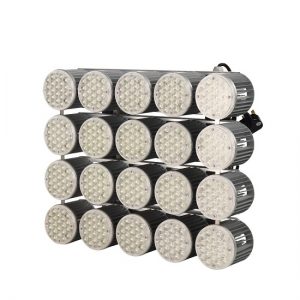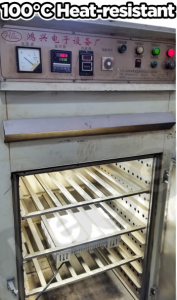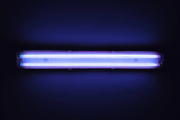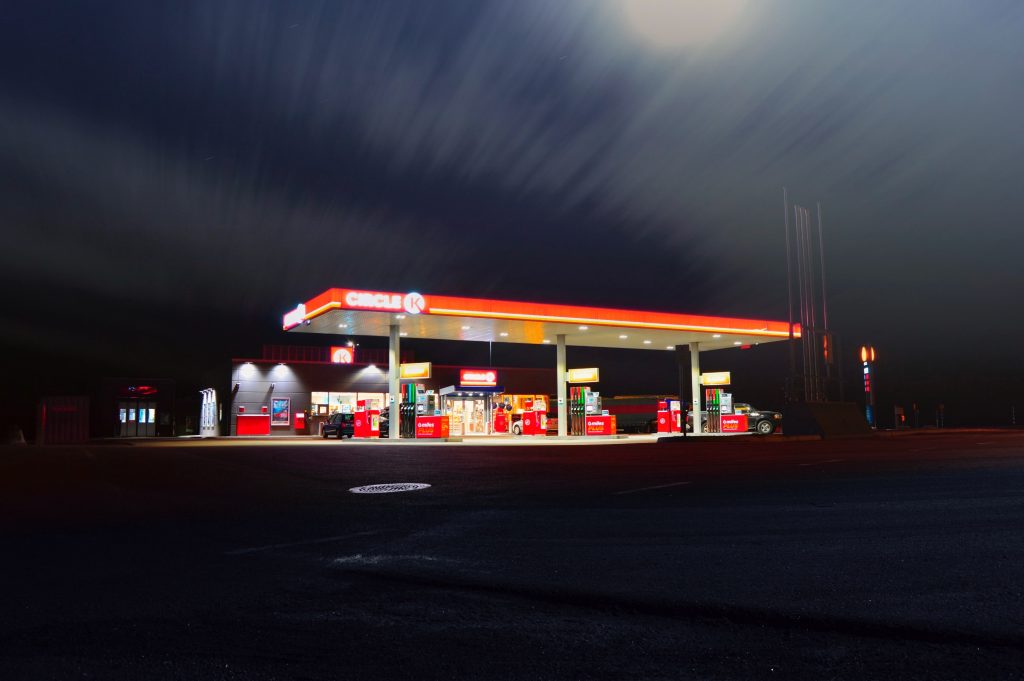Definition of hazardous area
Explosion-hazardous places refer to places where flammable and explosive substances are produced, used, and stored, and explosive mixtures can be formed, and there is a danger of explosion. Fire hazard sites refer to the production, use, processing, storage, or transportation of flammable liquids with a flash point higher than the ambient temperature of the site, or combustible dust, combustible fibers, or solid combustible substances, and in the production process. In terms of quantity and configuration, places that can cause fire hazards.
Classification of explosive hazardous locations
1 China’s classification of explosive hazardous locations
China adopts a method equivalent to IEC for the classification of explosive hazardous locations. According to the national standard GB 50058-92, explosive gas hazardous locations are divided into three levels: zone 0, zone 1, and zone 2 according to their degree of danger, and explosive dust hazardous locations are divided into two levels: zone 0 and zone 11.
China’s definition of hazardous locations
Explosive Substances-Division of Zones-Definition of Zones
Gas:
Zone 0: The environment where explosive gas mixtures appear continuously or for a long time,
Zone 1: An environment where explosive gas mixtures may occur during normal operation
Zone 2: An environment where explosive gas mixtures are unlikely to occur during normal operation, or an environment where explosive gas mixtures only exist for a short time even if they occur
Dust:
Zone 10: The environment where explosive dust appears continuously or for a long time
Zone 11: Sometimes the accumulated dust may be raised and an explosive dust mixture may occasionally appear.
2 How are explosive hazardous locations classified internationally?
There are basically two opinions on the classification of explosive hazardous locations in major industrial countries in the world.
One is represented by IEC (International Electrotechnical Commission), including Germany, Britain, Italy, Japan, Australia and other countries. The gas is divided into zone 0, zone 1, and zone 2, and dust is divided into zone 10 and zone 11. Its definition is basically the same as that of IEC (refer to China’s definition of each region, and the equivalent adopts IEC standards).
The other is the division of North American countries such as the United States and Canada. It is represented by the definition of NEC (National Electrical Code). Gas is divided into Zone 1 and Zone 2 (without Zone 0), and dust is also divided into Zone 1, Zone 2. Area.
The correspondence between the two is roughly as follows:
Gas: IEC0 zone, 1 zone-NEC zone 1
IEC Zone 2-NEC Zone 2
Dust: IEC zone 10-NEC zone 1
IEC District 11-NEC District 2
IEC?#21306;?#30340; English is Zone;
NEC?#21306;?#30340; English is Division.
What are the requirements for electrical lighting in hazardous locations?
(1) In places with fire, explosion, and poisoning risks, places directly related to personal safety such as operating rooms, and important public places with more than 500 people, there should be accident lighting devices.
(2) The accident lighting in the above dangerous places should have special signs.
(3) The voltage level of 36V and below should be adopted for the local lighting at work hazards, and 12V should be adopted for high electric shock hazards such as in metal containers or in narrow, inconvenient restricted spaces, and large pieces of grounded metal around. Lighting power supply of voltage level.
(4) Use electronic ballasts to replace inductive ballasts and starters.
(5) A diode VD is connected in series in the fluorescent lamp circuit of inductive start to solve.
In the circuit, when the switch SA is closed, the alternating current passes through the switch, ballast L, lamp filament, diode VD and starter to form a closed loop. Due to the unidirectional conductivity of the diode, the alternating current in the circuit is rectified into direct current. Because the ballast L is an inductive element, there is only resistance in the direct current circuit, and the current can pass smoothly to heat the filament and increase the working temperature of the lamp. . When the starter is disconnected instantaneously, the ballast can generate a higher self-induction potential to quickly ignite the filament. After the fluorescent lamp is turned on, the starter is disconnected, and the diode does not work, maintaining the original circuit. Normal working condition.
The serial diode parameters generally require a withstand voltage of 400V and a current of 0.5A or more. Diodes such as 2CP4 and IN4004 can be used to meet the above working requirements.
Lights used in hazardous locations
The Tachyon LED high bay light uses ultra-high luminous efficiency LED white light as the light source, the shell is made of aluminum profile (customer optional), the cover is made of high-strength lens (customer optional), and the heat dissipation adopts copper sheet heat conduction and aluminum alloy strip heat dissipation artificial air convection. Make the heat dissipation more perfect, combined with the individual needs of customers, the appearance of the product will change from time to time. The power of LED high bay lights is only 20% of sodium lights, which is equivalent to 100W LED high bay lights can replace 500W sodium lights, especially in line with the international “green, low-carbon and environmental protection” initiative. Applicable to factories, industrial and mining enterprises, petroleum, chemical , Smelting and other flammable and explosive places for flood lighting.
The high-quality explosion-proof lamp can be used safely in various flammable and explosive places.
Imported chips and optimized LED packaging technology ensure low light attenuation, high light efficiency, energy saving and environmental protection;
The power drive adopts the world famous brand to ensure the service life of the lamp.
Using crystal lens secondary light distribution design to meet the different lighting needs of different occasions,
The use of self-convection design to optimize the heat dissipation effect can ensure the excellent heat dissipation performance of the lamp, thereby extending the service life of the lamp.
The lamp adopts a hexagonal screw locking device, which can ensure that the angle will not change when working in a vibrating environment.
The lamp body is made of lightweight aluminum alloy material, special sealing and housing coating treatment, to ensure that the lamp will never corrode or rust in dangerous environments such as humidity and high temperature.
Technical safety requirements for hazardous locations
- For the production process with explosion hazard, the process route with less material hazard, gentler process and more mature process should be selected.
- The production equipment should have complete production process control methods, and set up reliable temperature, pressure, flow, liquid level and other process parameters control instruments. For strict process parameter control requirements, dual series control instruments should be set up, and its automation should be improved as much as possible. Degree; during process layout, the operating time of operators in dangerous places should be avoided or shortened as much as possible; there should be special process control methods for special production processes.
- Production plants, equipment, storage tanks, warehouses, and loading and unloading facilities should be far away from various sources of detonation and living and office areas; they should be arranged in the upwind direction of the smallest wind frequency throughout the year; the orientation of the plant should be conducive to the emission of explosive dangerous gases; There should be sufficient pressure relief area and necessary safety passages; there should be no detonation measures on the ground of places where explosive gas heavier than air is emitted; the safety distance of equipment and facilities should comply with relevant national regulations; explosive hazardous materials in production plants It must be limited, and the storage capacity of storage tanks and warehouses is strictly implemented in accordance with relevant national regulations.
- The production process must have reliable power supply, gas (steam), water supply and other public engineering systems. Dual power supply or backup power supply should be installed for particularly dangerous places, and uninterruptible power supply (UPS) should be installed for important control instruments. Special dangerous places and highly dangerous places should be equipped with devices to eliminate dangerous situations.
- The material, pressure level, manufacturing process, welding quality, and inspection requirements of production equipment, storage tanks and pipelines must comply with relevant national regulations; their installation must have good airtight performance. Measures to prevent high and low pressure gas blow-by and liquid blow-by shall be taken for the pressure pipeline. Explosion-hazardous places must have good ventilation facilities to prevent the accumulation of explosive gases. The production equipment should be arranged in open or semi-open air as far as possible, and the indoor layout should have sufficient ventilation; the ventilation and exhaust facilities should be located according to the specific gravity of the gas; the local leakage-prone parts should be equipped with local mechanical exhaust facilities that meet the explosion-proof requirements.






